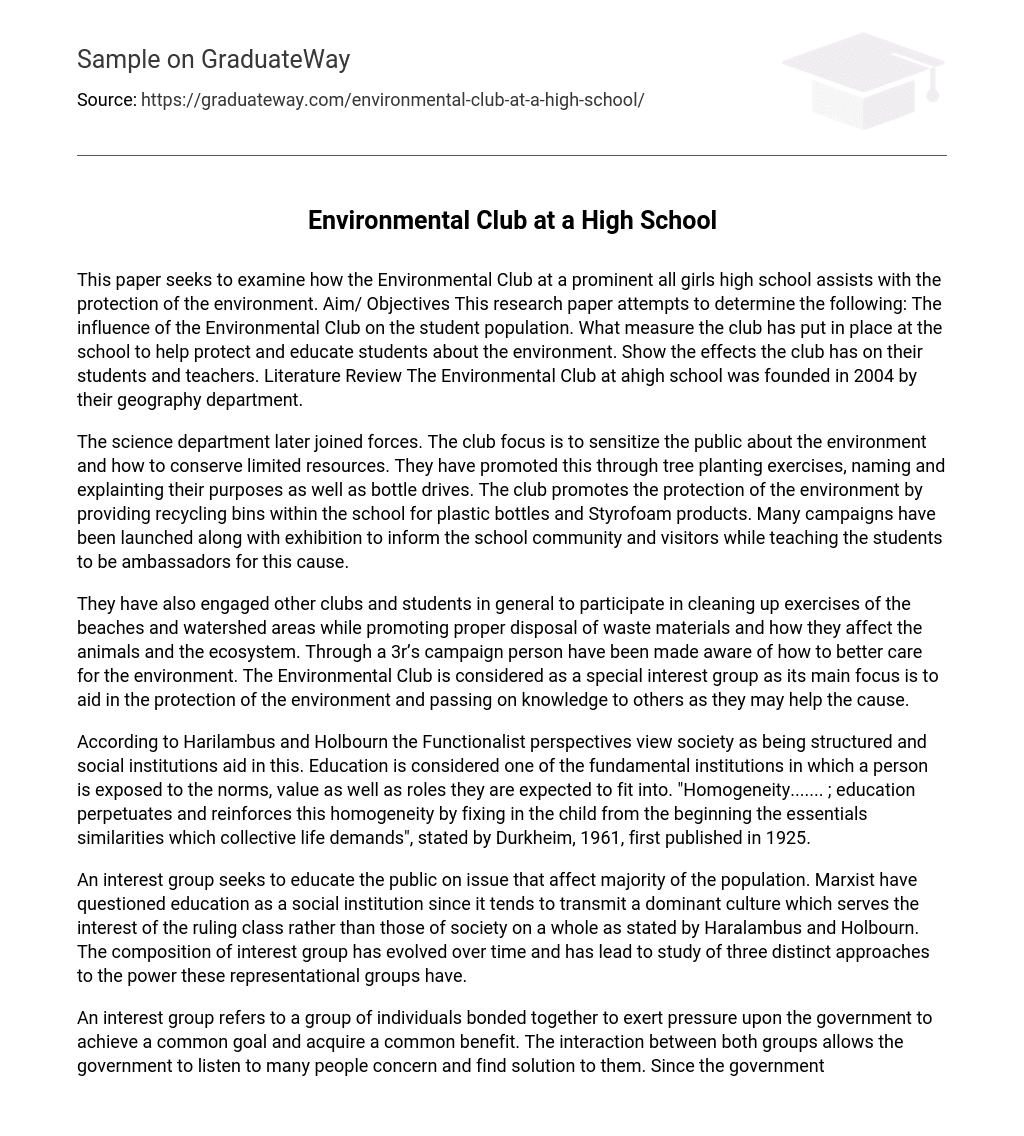This paper seeks to examine how the Environmental Club at a prominent all girls high school assists with the protection of the environment. Aim/ Objectives This research paper attempts to determine the following: The influence of the Environmental Club on the student population. What measure the club has put in place at the school to help protect and educate students about the environment. Show the effects the club has on their students and teachers. Literature Review The Environmental Club at ahigh school was founded in 2004 by their geography department.
The science department later joined forces. The club focus is to sensitize the public about the environment and how to conserve limited resources. They have promoted this through tree planting exercises, naming and explainting their purposes as well as bottle drives. The club promotes the protection of the environment by providing recycling bins within the school for plastic bottles and Styrofoam products. Many campaigns have been launched along with exhibition to inform the school community and visitors while teaching the students to be ambassadors for this cause.
They have also engaged other clubs and students in general to participate in cleaning up exercises of the beaches and watershed areas while promoting proper disposal of waste materials and how they affect the animals and the ecosystem. Through a 3r’s campaign person have been made aware of how to better care for the environment. The Environmental Club is considered as a special interest group as its main focus is to aid in the protection of the environment and passing on knowledge to others as they may help the cause.
According to Harilambus and Holbourn the Functionalist perspectives view society as being structured and social institutions aid in this. Education is considered one of the fundamental institutions in which a person is exposed to the norms, value as well as roles they are expected to fit into. “Homogeneity……. ; education perpetuates and reinforces this homogeneity by fixing in the child from the beginning the essentials similarities which collective life demands”, stated by Durkheim, 1961, first published in 1925.
An interest group seeks to educate the public on issue that affect majority of the population. Marxist have questioned education as a social institution since it tends to transmit a dominant culture which serves the interest of the ruling class rather than those of society on a whole as stated by Haralambus and Holbourn. The composition of interest group has evolved over time and has lead to study of three distinct approaches to the power these representational groups have.
An interest group refers to a group of individuals bonded together to exert pressure upon the government to achieve a common goal and acquire a common benefit. The interaction between both groups allows the government to listen to many people concern and find solution to them. Since the government is unable to deal with the immense responsibility which is delegated to it without interacting with every sector of national institution. The interest groups have immense power because they provide the government with the knowledge required to meet the many demands.
Every interest is seen as expressing a combines purpose of individuals that have come together to achieve certain objectives. The groups have limited organizational skills and knowledge of government to succeed in the few specific issue on their objectives. Since interest groups usually have a fluid membership due to which use the media and extreme action to obtain their goals. These groups usually are fighting for a change to private/public policy they find unfair but once they have met their goal the disband.





